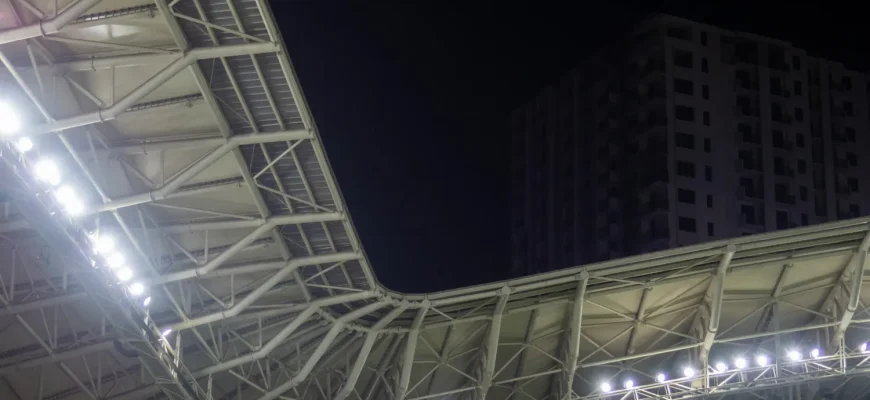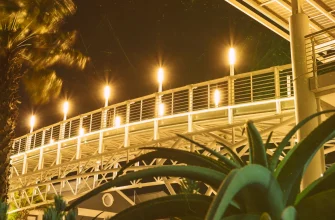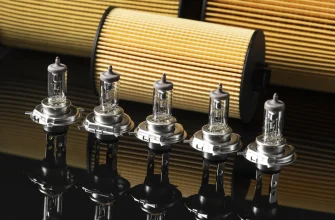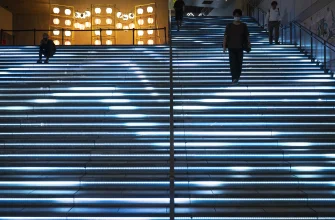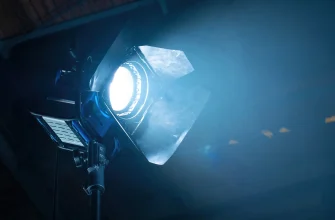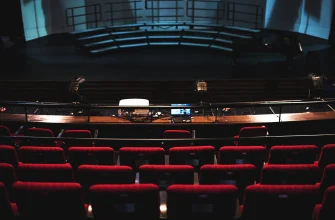Proper multi-level lighting of sports grounds, arenas, stadiums, and courts is planned at the initial stage of the main construction. This is necessary because the project needs to be thoroughly tested at several stages. At the very initial stage, luminaires and floodlights are selected based on such parameters as power, area, and size of each lighting device. The choice of lighting depends on many factors, which we will discuss below.
How to choose lighting for a sports facility?
High-quality lighting allows you to play sports for much longer. For example, in football and tennis, evening lighting is critical for matches, and in athletics, it helps athletes maintain concentration during outdoor competitions. Training in the evening helps athletes adapt more easily to international competition, especially when flying to countries with different time zones. Thanks to good lighting, athletes can train even at night, using the power of modern floodlights.
It’s also important to note that sporting events, such as football matches or final performances, are often held in the evening. The better the lighting, the better the conditions for both spectators and athletes. Bright floodlighting allows you to evaluate the technique and efforts of athletes, increasing the overall level of experience from the event.
High-quality video and photography at sports arenas also plays an important role. High-quality lighting allows for the use of modern technologies such as HDR shooting and high-quality slow motion video, ensuring that every moment is clear and detailed. Modern technologies allow us to record controversial moments of the competition by viewing them on special screens. This greatly facilitates the work of judges and makes the competition fairer.
Thus, lighting is a key factor in the successful operation of sports facilities.
Important criteria for proper lighting of a sports arena
- Economy. Powerful luminaires operate for a long time, providing illumination until the last athlete leaves the arena. For example, LED lamps consume up to 80% less energy than traditional incandescent lamps, which can significantly reduce energy costs. They also have a lifespan of up to 30,000 hours, which is 10 times longer than standard lamps.
- Environment. Modern energy-saving lamps are safer for health. For example, halogen lamps contain mercury, and fluorescent lamps emit ultraviolet light, which can harm the skin and eyes. For new generation sports fields, it is recommended to use light-emitting diode (LED) lamps, which are environmentally friendly and safe.
- Perfect color reproduction. Sports facilities have many colored elements: flags, cards, markings, buoys, etc. High-quality lighting must ensure correct color reproduction, which is important for athletes’ orientation during competitions.
- Weight. Lightweight floodlights reduce the load on structures, reducing installation and material costs. Modern LED models combine minimum weight with maximum brightness.
Separate norms and standards of the IOC and FIFA apply only to facilities that plan to host international competitions. These standards can be incorporated into the project at the preliminary design stage.
Lighting for gyms
Modern gyms are multifunctional. They host not only training and competitions, but also other events such as exams, briefings, meetings, etc. Therefore, lighting must be safe and adaptive to different types of activities.
To maintain concentration and motivation of athletes, it is recommended to use luminaires with a cold color tint. This is because cold light stimulates brain activity and increases productivity, according to research on the effect of lighting color temperature on human psychophysiology. Practical experience also shows that such lighting helps athletes maintain focus during long training sessions. The light should be uniform and not irritate the eyes, so floodlights should have frosted shades. This is especially important for long-term training.
Protecting the lights from mechanical damage is also an important aspect. Shatterproof glass and secure mounting to the ceiling or walls help to avoid breakage during training.
Advantages of LED floodlights for gyms
- Economy. LEDs last up to 30,000 hours and consume minimal electricity, which makes them much more efficient than other types of lamps.
- Minimum weight. This simplifies installation and reduces the load on structures.
- Resistance to external factors. LED floodlights can withstand temperature changes, moisture, wind and dust.
- Flexibility of choice. A variety of shapes, sizes and color temperatures allows you to choose the best solution for each object.
- Aesthetics. LED floodlights organically fit into the interior of indoor halls and outdoor arenas.
Lighting a stadium with LED lights
Stadiums are illuminated from high poles located in the corners of the arena. Floodlights create uniform illumination without disturbing the athletes. The high intensity of the luminous flux allows for the installation of lighting fixtures at high heights. Floodlight housings must be durable, airtight and weatherproof.
Installation and maintenance of equipment
Installing floodlights on high masts is a task for professionals. Electricians with access to high-altitude work carry out the installation using special equipment, such as towers.
For medium-sized sports grounds (tennis courts, basketball and volleyball fields), it is recommended to use luminaires with an IP65 protection rating. This standard guarantees protection against dust and water, which is especially important for outdoor areas that are exposed to rain, wind, or even extreme temperatures. Luminaires with IP65 ensure stable operation in high humidity, dust storms or sudden temperature changes, making them the best choice for any climate. They can withstand moisture, dust, shock and temperature fluctuations, ensuring durability and reliability.
